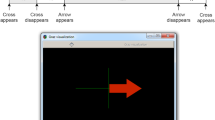Abstract
One of the major aims of BCI research is devoted to achieving faster and more efficient control of external devices. The identification of individual tap events in a motor imagery BCI is therefore a desirable goal. EEG is recorded from subjects performing and imagining finger taps with their left and right hands. A Differential Evolution based feature selection wrapper is used in order to identify optimal features in the spatial and frequency domains for tap identification. Channel-frequency band combinations are found which allow differentiation of tap vs. no-tap control conditions for executed and imagined taps. Left vs. right hand taps may also be differentiated with features found in this manner. A sliding time window is then used to accurately identify individual taps in the executed tap and imagined tap conditions. Highly statistically significant classification accuracies are achieved with time windows of 0.5 s and more allowing taps to be identified on a single trial basis.





Similar content being viewed by others
References
Ang KK (2008) A clinical evaluation of non-invasive motor imagery-based brain-computer interface in stroke. Proc A Int Conf IEEE Eng Med Biol Soc 2008:4178–4181
Balakrishnan D, Puthusserypady S (2005) Multilayer perceptrons for the classification of brain computer interface data. In: Proceedings of the IEEE 31st annual Northeast bioengineering conference, 2005. IEEE, pp 118–119
Birbaumer N (2000) The Thought Translation Device (TTD) for completely paralyzed patients. IEEE Trans Rehab Eng 8(2):190–193
Blankertz B, Dornhege G, Krauledat M, Müller KR, Kunzmann V, Losch F, Curio G (2006) The Berlin Brain-computer interface: EEG-based communication without subject training. IEEE Trans Neural Syst Rehab Eng Publ IEEE Eng Med Biol Soc 14(2):147–152
Congedo M, Lotte F, Lecuyer A (2006) Classification of movement intention by spatially filtered electromagnetic inverse solutions. Phys Med Biol 51(8):1971–1989
Dennis J, McFarland William A, Sarnacki JRW (2003) Brain-computer interface (BCI) operation: optimizing information transfer rates. Biol Psychol 63:237–251
Fabiani GE, McFarland DJ, Wolpaw JR, Pfurtscheller G (2004) Conversion of EEG activity into cursor movement by a brain-computer interface (BCI). IEEE Trans Neural Syst Rehab Eng Publ IEEE Eng Med Biol Soc12(3):331–338
Jeannerod M (1995) Mental imagery in the motor cortex. Neuropsychologia 33:1143–1419
Pfurtscheller G, Neuper C (2001) Motor imagery and direct brain-computer communication. Proc IEEE 89(7):1123–1134
Portelli AJ, Nasuto SJ (2008) Toward construction of an inexpensive brain computer interface for goal oriented applications. In: AISB, Aberdeen, AISB, pp 2–7
Stavrinou ML, Moraru L, Pelekouda P, Kokkinos V (2006) A wavelet tool to discriminate imagery versus actual finger movements towards a brain computer interface. In: Biological and medical data analysis of 7th international symposium, Thessaloniki, Greece, pp 323–333
Storn R, Price K (1995) Differential evolution—a simple and effiecient adaptive scheme for global optimzation over continous spaces
Thulasidas M, Guan C, Wu J (2006) Robust classification of EEG signal for brain–computer interface. IEEE Trans Neural Syst Rehab Eng Publ IEEE Eng Med Biol Soc 14(1):24–29
Vaughan TM (2006) The Wadsworth BCI research and development program: at home with BCI. IEEE Trans Neural Syst Rehab Eng Publ IEEE Eng Med Biol Soc 14(2):229–233
Williams N, Daly I, Nasuto SJ, Saddy D, Warwick K (2009) ERP classification using empirical mode decomposition. In: The 5th UK and RI postgraduate conference in biomedical engineering & medical physics, Oxford, pp 5–6
Wolpaw JR (2007) Brain–computer interfaces as new brain output pathways. J Physiol 579(Pt 3):613–619
Acknowledgments
The authors would like to thank the reviewers for their many helpful comments which were instrumental in improving the quality of this work. They would also like to extend their thanks to the numerous friends and colleagues who freely gave their time to volunteer as subjects in this study.
Author information
Authors and Affiliations
Corresponding author
Rights and permissions
About this article
Cite this article
Daly, I., Nasuto, S.J. & Warwick, K. Single tap identification for fast BCI control. Cogn Neurodyn 5, 21–30 (2011). https://doi.org/10.1007/s11571-010-9133-x
Received:
Revised:
Accepted:
Published:
Issue Date:
DOI: https://doi.org/10.1007/s11571-010-9133-x




